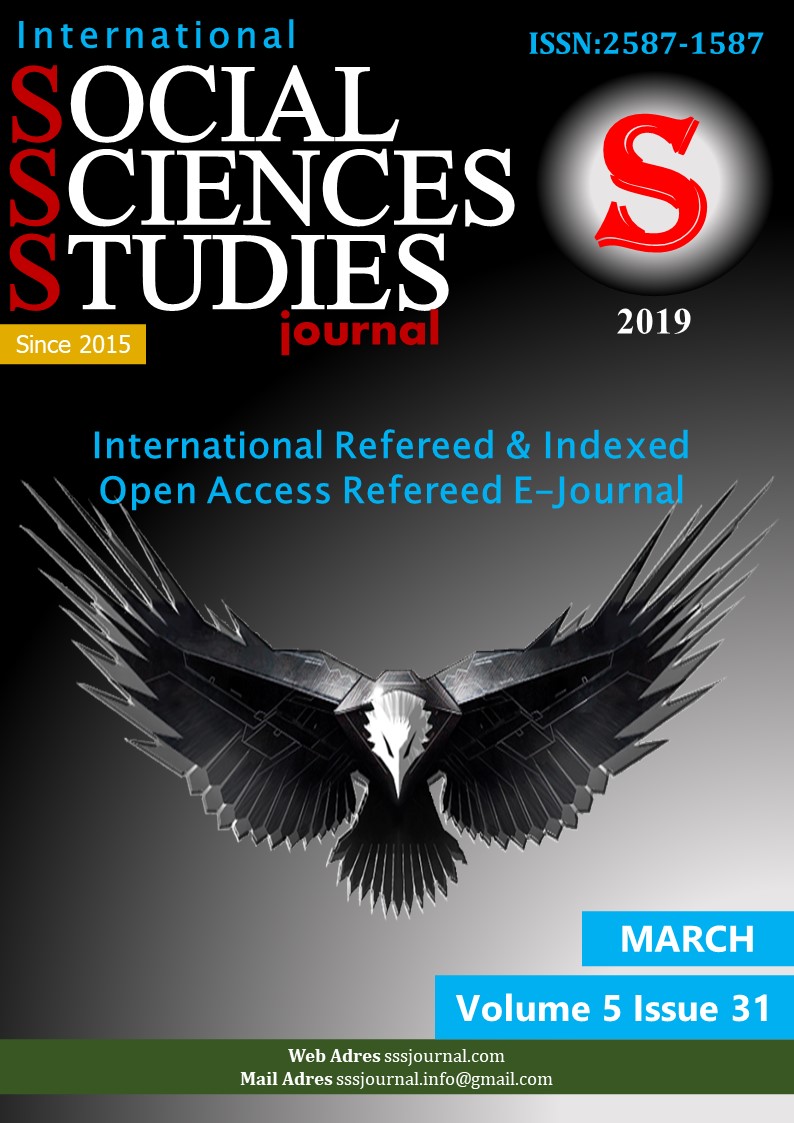Author :
Abstract
Bu çalışmanın amacı İbrahim Alimoğlu Müzik Müzesinde bulunan 298 adet çalgının ses kayıt, edit, mix aşamalarının betimlenmesidir. Çalgı sesleri kaydedilirken bir taraftan da çalgıların sergilendiği alanın konvolüsyon yöntemiyle yansışım değerleri modellenmiştir. Bu sayede müzenin internet sitesine giren bir bireyin, çalgıyı müzenin içerisindeki koridorlar da çalınıyormuş gibi duyması sağlanmıştır. Bu anlamda bu çalışma, ülkemizde yapılan ilk çalışmadır. Literatür taramasında ülkemizde tek seferde bu kadar sayıda dört kıtaya ait çağdaş ve otantik çalgı ses kaydı yapan, bu ses kayıtların kendi ortamındaki konvolüsyon yöntemiyle efektlendirilmesinin sağlandığı, çalınamayan çalgıların ise sanal çalgı haline getirilip tınısının ziyaretçilere duyurulmasının sağlandığı bir çalışmaya rastlanılmamıştır. Bu anlamda çalışmanın özgün bir çalışma olduğu düşünülmektedir. Çalışmanın yöntemi nitel ve betimlemeye dayalıdır. Çalışma kapsamında 298 adet çalgıdan 480 adet ses kaydı, 498 adet Türkçe ve İngilizce Seslendirme (dublaj kaydı) kaydı, 498 adet müzik arka planlı seslendirme kaydı yapılmıştır. Toplamda 1476 adet ses dosyası stüdyoda edit aşamasında kayıt altına alınmıştır. Çalışma ses kayıt aşaması 25 günde 18 saat çalışılarak, edit aşaması günde 14 saat çalışmayla 60 günde, Türkçe seslendirmeleri 14 gün, İngilizce seslendirmeleri ise 15 günde tamamlanmıştır. 1476 ses dosyasının ortaya çıkma aşaması toplamda 128 gün sürmüştür. Çalışma sonucunda başarılı bir şekilde Müzik Müzesi için Sesli Bir Rehber geliştirilmiştir.
Keywords
Abstract
The aim of this study is to describe the sound recording, editing and mix stages of the 298 instruments in the İbrahim Alimoğlu Music Museum. While the instrument sounds were recorded, the reflection values of the area where instruments were displayed were modeled by convolution method. In this way, an individual who entered the museum's website was allowed to hear the instrument as if the corridors inside the museum were being played. In this sense, this study is the first study conducted in our country. In the literature review, there is no study in this country which has been recorded in such a large number of four continents in a contemporary and authentic instrument. In this sense, the study is thought to be a unique study. The method of the study is based on qualitative and description. In the scope of the study, there were 480 voice recordings, 498 Turkish and English vocalization (dubbing record) recordings and 498 musical background recordings were recorded. A total of 1476 audio files were recorded in the studio at the editing stage. The working voice recording phase was run for 18 hours in 25 days, the editing stage was completed in 60 days with 14 hours of daily work, and the Turkish voices were completed in 14 days and in English in 15 days. The 1476 sound files took 128 days in total. At the end of the study, a Voice Guideline for Music Museum was successfully developed.
Keywords
- Dennen, V. P. (2011). A Cross-Cultural Music Museum System With Impression-Based Analyzing
- Dennen, V. P. (2011). A Cross-Cultural Music Museum System With Impression-Based Analyzing Functions. Iadis International Conference E-Society 2011 Conversations.
- Dutilleux, P., & Tomfelde, C. (1999). Architecture and Music Laboratory. A Museum Installation. Proc. Conference on Spatial Sound Reproduction, 191–206. Retrieved from citeulike-article-id:5985491
- Helleberg Jørgensen, M., Knudsen, A. S., Wilmot, T. M., Lund, K. D., Serafin, S., & Purwins, H. (2015). AMobile Music Museum Experience for Children. NIME 2015 Proceedings of the International Conferenceon New Interfaces for Musical Expression, 36–37.
- İsimsiz. (2009). Mimo-International. Retrieved from http://www.mimo-international.com/MIMO/
- Labaye, E., & Remes, J. (2015). Digital Technologies , and the. Digiworld Economic Journal, 100(100), 325–340. Retrieved from www.comstrat.org
- Leonard, M. (2010). Exhibiting popular music: Museum audiences, inclusion and social history. Journal of New Music Research, 39(2), 171–181. https://doi.org/10.1080/09298215.2010.494199
- Midgette, A. (2011). Music museums of the 21st century: High-tech, cutting edge, interactive. Retrieved from https://www.washingtonpost.com
- Say, A. (2002). Müzik Ansiklopedisi. In Müzik Ansiklopedisi. Müzik Ansiklopedisi Yayınları, Ankara.
- Stradner, G. (2011). Müzik Müzelerinde Bakım Onarım Güvenlik, Türkiye’de Müzik Kültürü Kongresi Bildiriler Kitabı, Atatürk Kültür Merkezi Yayınları, Ankara.
- TRT (1986). Türk Musikisi Tarihi Derleme, I. Cilt, Müzik Dairesi Başkanlığı Yayınları, Ankara.
- Türkmen, U. (2018). Muzikkolleksiyonu. Retrieved from http://muzikkoleksiyonu.com/





